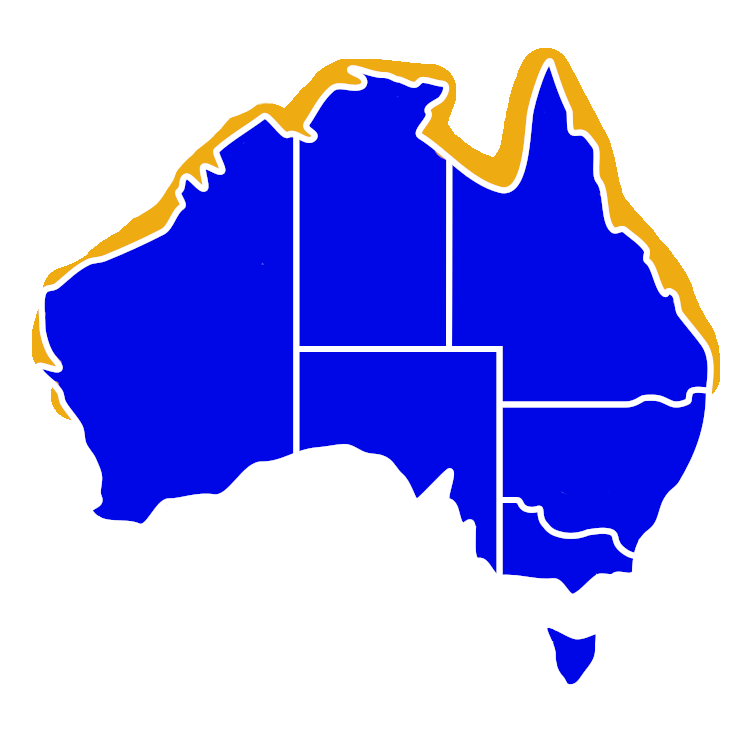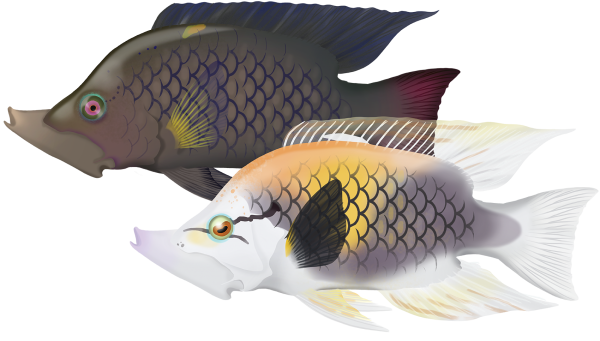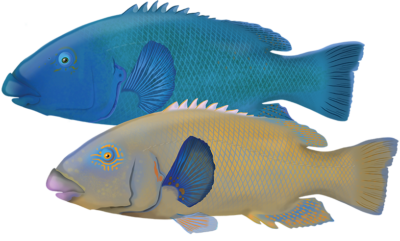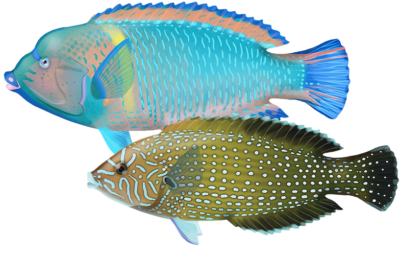Quick Facts
Distribution

Interesting Info
- The Slingjaw Wrasse is a fish species that is native to the tropical and subtropical waters of the Indo-Pacific region, including Australia. In Australia, they can be found throughout the northern part of the country from Western Australia to Queensland.
- Slingjaw wrasses have a slender, elongated body and are typically brown or green in colour with darker stripes or spots. Their coloration can vary depending on their habitat and age.
- The most distinctive feature of the Slingjaw wrasse is its long, protruding jaws. These jaws can be extended rapidly to grab prey, and they are equipped with sharp teeth that are used to tear apart prey.
- They are carnivorous and primarily feed on small fish, crustaceans, and other invertebrates.
- Slingjaw wrasses are active during the day and are often seen swimming near the bottom of the ocean. They are relatively fast swimmers and can move quickly to catch prey.
- They spawn in the open water during the summer months, between October and March. During spawning, males and females come together in large groups to release their gametes into the water column. The fertilised eggs then hatch into pelagic larvae that drift in the water column for several weeks before settling on the bottom of the ocean near coral reefs.
- Estimated lifespan is up to 25 years.
Species Interaction
Recreational Fishing, Snorkeling & Diving
Slingjaw wrasses are not typically targeted for recreational fishing in Australia, but they may be caught incidentally while targeting other species. In the wild, snorkelers and divers wanting to observe them can be challenging because they are often solitary fish and are not typically seen in large schools. They are most commonly seen near the bottom of the ocean, where they hunt for prey.
Scientific Classification
Kingdom: Animalia
Phylum: Chordata
Class: Actinopterygii
Order: Perciformes
Family: Labridae
Genus: Epibulus
Species: Epibulus Insidiator
Conservation Status
In Australia, Slingjaw wrasses are not considered endangered or threatened, but their populations are impacted by habitat destruction, overfishing, and climate change. They are considered a species of “least concern” by the International Union for Conservation of Nature (IUCN).
How to catch
Slingjaw Wrasse
Catch Difficulty: Easy
Tackle: Running Sinker Rig
Bait: Crab, Fresh cut flesh baits, Lures, Pilchards, Prawns, Squid, Worms, Soft plastics
Technique: Keep bait on the bottom, Keep bait close to the reef/structure
Popularity: Not targeted - Bycatch
Recreational Viewing
- Snorkeling & Scuba
Finding: Difficult
Temperament: Peaceful
Location: Inner Reef, Outer Reef, Lagoon
Danger: None





